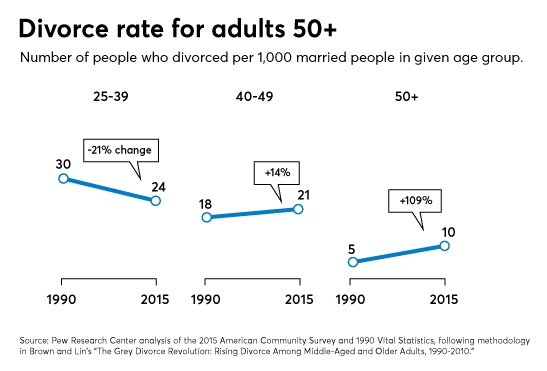Divorce often involves the splitting of major financial assets, and an IRA plan is, in some cases, a couple’s largest single asset.
Splitting an IRA in a divorce is not like splitting a home or other assets. IRAs contain their own specific tax rules that must be followed to avoid triggering taxes or penalties. Advisors are in the unique position to help divorcing clients ensure IRA funds are split correctly.
A recent U.S. Tax Court case is a reminder for both advisors and clients of how tax rules work when an IRA is split in a divorce. Despite an agreement and good intentions, the rules in this case were not followed, resulting in unnecessary taxes and penalties.
Good Intentions, Bad Results
When Jeremy and Karie Summers decided to divorce, they were determined to do so in the most amicable and least expensive way possible. They did not want to involve lawyers.
On their own, Jeremy and Karie put together an agreement covering how they would handle custody of their four children and divide their property. On March 18, 2013, Jeremy filed for divorce. His filings incorporated their agreement.
Jeremy had an IRA, and he wanted to give half to Karie. Karie did not work and had debts. To help her, Jeremy agreed to split the IRA before the divorce decree became final. That was a critical mistake.
In late April 2013, Jeremy took a distribution of his entire IRA. He deposited the $17,378 in the checking account he shared with Karie. The next day, using almost half the funds, he paid off Karie’s car loan. He later transferred another $71 to the checking account to ensure she received exactly half the IRA.
On June 3, 2013, a final divorce decree incorporating the agreements set forth in Jeremy’s divorce filings was entered. However, as he and Karie had already divided up the IRA, the decree stated that neither party had a retirement plan.
Jeremy filed his taxes for 2013 and paid the income taxes due on the IRA distribution. However, he did not pay the 10% early distribution penalty. The IRS said he owed the penalty. He disagreed and went to court representing himself. The court held that the 10% early distribution penalty applied to the IRA distribution.
The Penalty Dispute
Jeremy conceded that he owed the 10% penalty on the half of the IRA distribution he kept for himself. That left the court to decide whether the half he gave to Karie was subject to the penalty. Jeremy argued he should not be held liable for that portion. He made the case that the distribution was paid pursuant to a qualified domestic relations order to an “alternate payee.” He said Karie was the alternate payee.
Unfortunately for Jeremy, the court sided with the IRS. Interestingly, the IRS did not argue, nor did the Court say, that there was no way the exception to the 10% penalty for distributions pursuant to a QDRO could apply, because QDROs are only used for company retirement plans, not IRAs.
Instead, the court agreed with the IRS and said Jeremy did not qualify for the exception for two reasons. First, the IRA distribution was made directly to Jeremy and not to an alternate payee. He received the check and deposited it into the joint bank account. He then gave Karie half the proceeds.
Second, there was no court order of any kind, much less a QDRO. Although Jeremy’s divorce filings mentioned a split of the IRA, a month before the final court order was issued, he took a total distribution of the IRA and gave half to Karie. The final divorce decree said neither party had a retirement plan, which was accurate, because the IRA had already been distributed. The IRA distribution was not made “pursuant to” that order or any court order.
The court expressed sympathy for Jeremy, but still held him liable for the 10% penalty. According to the court, there was no choice.


